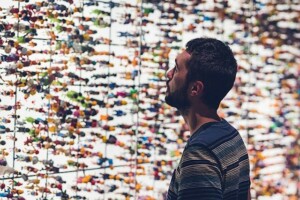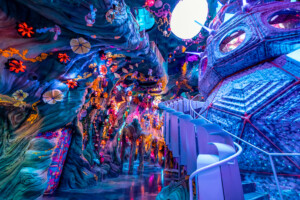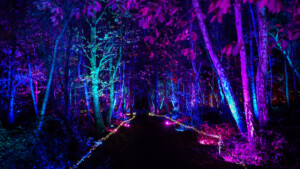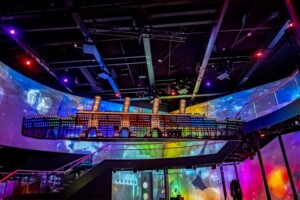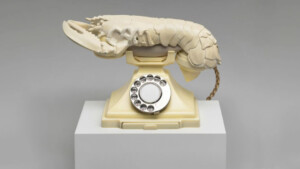The rapidly growing nation of Qatar, located on a small peninsula on the Arabian Gulf, is taking giant steps to becoming a premiere arts and culture destination in the Middle East with the construction of a new, strikingly designed National Museum.
 By Tricia M. McCunney, Hill International, Inc.
By Tricia M. McCunney, Hill International, Inc.
The museum, already under construction in Qatar’s capital city of Doha, is scheduled to be completed in late 2015. Renowned French architect Jean Nouvel has designed the structure, which uses a series of interconnected concrete disks set at varying angles to form a “desert rose, ” a crystal with sharply angled “petals” that often forms in arid climates.
The new museum is being constructed around Qatar’s existing art museum, which was housed in a restored Amiri palace built in the early 1900s and renovated in the 1970s. According to the Qatar Museums Authority, the new museum is designed to look as if it had grown up, organically, around the former palace. “This splendid monument to Qatar’s past is now preserved as the heart of the new National Museum of Qatar, ” the Museums Authority said in a statement on its website.
Nouvel is a modernist who has designed some of the world’s most unique buildings, including Torre Agbar in Barcelona, the Gasometers residences in Vienna, the One New Change commercial building in London, the New Louvre in Abu Dhabi, and the Burj Doha, an iconic building located just a short distance from the Qatar National Museum site.
“This museum is a modern-day caravanserai, ” Nouvell said of his design. “From here, you leave the desert behind, returning with treasured images that remain engraved on your memory.”

Qatar’s profile as a leader in both business and culture has likewise risen dramatically over the past decade. When previous ruler Sheikh Hamad bin Khalifa Al-Thani assumed power in 1995, he ushered in sweeping social, political and economic changes in his country. Those changes included lifting media censorship, allowing women to vote, and investing in education and the arts. “The last five years have seen Qatar emerge as a vibrant, economically thriving, safe, and progressive country with a focus on the future, ” the Museums Authority stated. “While oil and natural gas have formed the basis of this transformation, Qatar’s long-term vision is to become a regional arts and education hub.”
The new National Museum will play a large role in that transformation. The museum will include 86, 000 square feet of permanent gallery space, 21, 500 square feet of temporary gallery space, a 2002-seat auditorium, a television studio, two cafes and a restaurant, and a museum shop. Behind the scenes, the museum will house a research center, state-of-the-art restoration laboratories, staff offices and collection processing and storage areas. The museum will be flanked by 1.2 million square feet of landscaped grounds designed to evoke images of the Qatari desert.
The museum’s design incorporates steel and steel disks clad with irregularly shaped, fiber-reinforced concrete panels that intersect at varying angles. The interior will echo the exterior, in both design and color scheme. The design isn't just striking; it also works hard to save energy and conserve water, and museum officials hope it will achieve a coveted LEED Silver rating from the U.S. Green Building Council.

“The conversion of the natural phenomenon of the desert rose into a living space has presented many challenges to the construction team, ” said Hill International vice president and country manager Regard Aboo-Yakou, Ph.D. “The shape is very irregular and none of the surfaces can be achieved using standard building techniques.”
Hill’s experience in other complex projects throughout the Middle East has helped to meet and minimize those challenges, Aboo-Yakou added. “We have deployed some of the best professionals to this project because of its complexity, and these professionals are using their many years of experience to facilitate the construction process.”
The museum’s galleries will showcase three primary themes: Qatar’s natural history, its rich social and cultural history, and its history as a nation over the past 300 years. The building will accommodate the National Museum’s existing collection of more than 8, 000 artifacts, and allow room to grow.
“The museum as it is designed now will exhibit all aspects of life in Qatar from clothing to food to industry to achievements like Al Jazeera, ” Aboo-Yakou said.
“The main difference between this museum and other museums around the world is that the National Museum of Qatar will be a focal point for visitors and locals alike, in that it will offer an educational medium rather than just a viewing medium, ” Aboo-Yakou added. “There are many interactive exhibits that will employ state-of-the-art technologies that did not exist a few years ago.”
The museum is being developed by the Qatar Museums Authority, established in 2005 and chaired by H.E. Sheikha Al Mayassa Bint Hamad Bin Khalifa Al-Thani. Qatar already is home to the Museum of Islamic Art, the Orientalist Museum, and the Arab Museum of Modern Art. “The National Museum is expected to further Qatar’s reputation as a cultural beacon, ” Aboo-Yakou said.
Hill International has been retained by Qatar Petroleum, on behalf on the Museums Authority, to manage construction of the National Museum. Hill, which has a long-standing presence as an effective construction manager in the Middle East, fully recognizes the importance of the project, said Raouf S. Ghali, President of Hill’s Project Management Group (International). “We are honored to have been chosen to assist with the construction of this iconic monument to the nation and people of Qatar, ” Ghali said. Hill has managed or consulted on some of the region’s most prestigious and culturally significant projects, including Abu Dhabi’s Grand Mosque, Dubai’s Palm Islands, the Burj Dubai, and the Grand Egyptian Museum, among others.

The benefits of the National Museum will extend far beyond the borders of the diminutive 7, 200-square-mile country. “At this unparalleled new institution, Qataris will be able to discover more about their immediate ancestors and their roots in the region, learn about the formation of Qatar’s early cities and, above all, be exposed to the historical, material culture, an intangible heritage represented in the collections. International visitors will come away with a better understanding of the Qatari people and of the initiatives underway today to enhance education, develop every aspect of culture, and pursue a program of sustainability, ” the Museum Authority said.
“Qatar has taken a different approach to tourism than other GCC countries, ” AbooYakou said. “The major emphasis in Qatar is on culture, sports and education. The museum will become the cultural masterpiece for the country, because it will offer to visitors an insight into the Qatari history, culture and way of life. This familiarization will make it easier for tourists to understand the Qatari people and, therefore, will help them enjoy the country more.”









